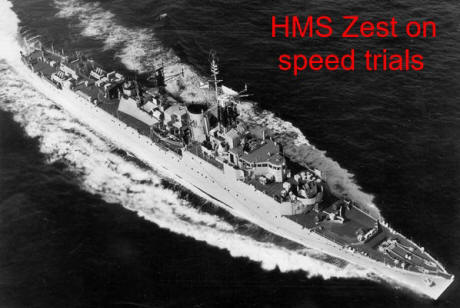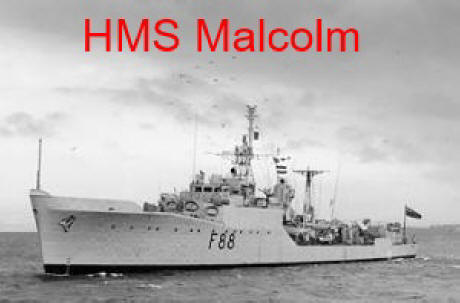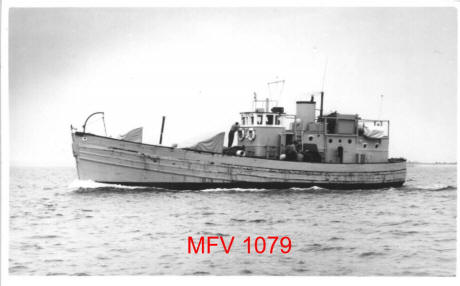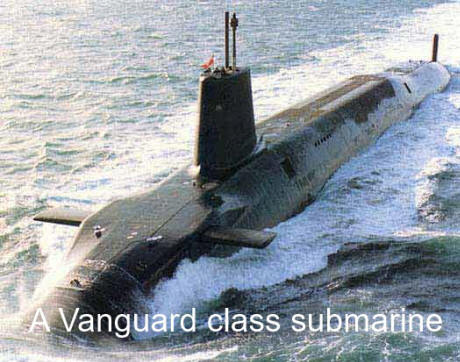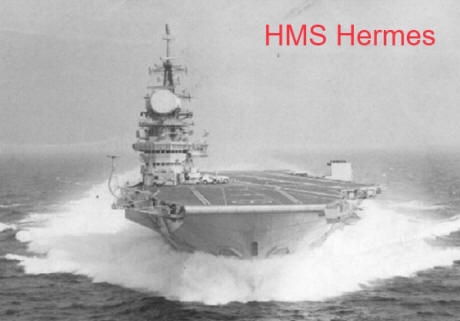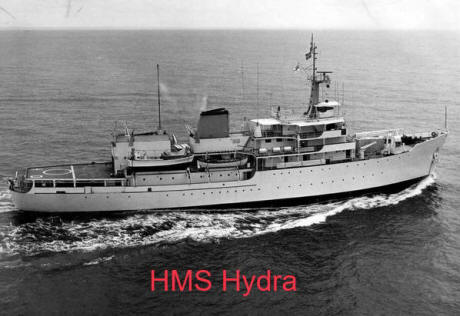

June 1963 - My cousin Bernard, with whom I'd grown up, had earlier joined the Royal Navy and I accompanied his Mum, (my Aunt Emily) down to Plymouth to witness his 'passing out' parade. It was this trip that made me decide that I wanted to become a 'sailor' too. After returning home, I wasted little time and attended the recruitment office in Albert Square, Manchester, where I took and passed the required entrance exams and medical (cough please!).
On September 22nd 1963, I boarded the midnight train from Manchester London Road Station (now Piccadilly) and travelled south to Plymouth, then on to Torpoint in Cornwall and HMS Raleigh, the new entrant Shore Establishment, arriving around 7.30am on the 23rd. I 'signed on' the same day as a JME(2) - a Junior Marine Engineer (2nd class) - on an LS1 term. That meant long service.....9 years active and 3 years reserve, and 'active' service started at age 18. As I was only 16, it meant that I would actually do 11 years active and one year reserve to make up 'my twelve'. I was now a member of the armed forces and serving under the White Ensign!
The White Ensign
In 1627 the English Fleet (as it was then) was divided into three squadrons, the Red, Blue and White, in that order of seniority, and each had an English ensign in the appropriate colour with St George's Cross in the top corner. By 1653 the order of seniority had been changed to Red, White and Blue and in 1702 a large red cross was placed on the White Ensign to differentiate it from the French ensign, which at the time was plain white. In 1707, following the political union of England and Scotland, the three ensigns came to bear the Union Flag in the top corner as they do this day. In 1801 the additional red diagonal of St Patrick's Cross was added to the Union Flag and the three ensigns then took their modern form.
Nelson was the Vice Admiral of the White Squadron, so Trafalgar was fought under the White Ensign in 1805 rather than the Red or Blue one. In 1864 the squadron system was abandoned and the entire Royal Navy adopted the White Ensign, meanwhile the Merchant Navy was allocated the Red Ensign, and the Blue Ensign was reserved for non-military government ships. During the years since then a large number of special ensigns have been created for many organisations (including yacht clubs and government departments) whose badges have been placed onto a blue or red ensign to create a new and distinctive flag.
The White Ensign remains the premier British maritime flag and is worn by all Her Majesty's ships. Several other nations have developed their own versions of the White Ensign including Australia, India, Jamaica and Nigeria.
Basic training at HMS Raleigh wasn't so bad, the discipline was tough but I enjoyed my time there. We had a couple of deserters from our intake but they were soon 'captured' and returned to camp
for their punishment. I enjoyed the classroom work, the drill, the assault courses, the rifle ranges (qualified as marksman with a .303) and the training in general - but I couldn't wait to be posted to my first ship! I did manage to get a couple of days onboard HMS Otter during our sea training weeks on the submarine depot vessel HMS Adamant.
In March 1964, I took a weekend leave home, and on returning to Torpoint, I was told, "Get to the stores, draw tropical kit, get to the sick bay and have this jab and that jab .......you've been drafted!"
Friday 13th March - and a small group of us left 'Raleigh' and made our way to RAF Lyneham (or was it Brize Norton - I can't remember!) for our flight to Luqa in Malta, and our first ship .........HMS Zest.
She was originally a Zambesi Class Destroyer of 1,710 tons displacement, launched on the 14th October 1943 and armed with four 4.5inch dual purpose guns, six 40mm anti-aircraft guns and four depth charge throwers. Her pennant number was R02, later D02 before becoming F102 when she was converted into a Type 15 fast anti-submarine frigate in 1954/56 at Chatham Dockyard. Her armament was also modified at the same time, to one 4.5inch dual purpose gun, 40mm anti-aircraft gun forward and two Limbo Mk10 anti-submarine mortars. She had a crew of 174, was 110 metres in length and had a beam of 11.61 metres, with a draft of 4.46 metres.
Two Admiralty 3-drum boilers provided steam for the Parsons geared turbines driving two shafts, developing 40,000 shaft horsepower. Her top speed was just under 37 knots, though I only remember her doing just over 32 knots during Full Speed Trials.
I joined her in Grand Harbour, Valletta, under the Captaincy of Commander John Fiddian-Green (d.29/03/1994), during a mini-refit before sailing back to the UK for work-up trials. We then returned to Malta on the 3rd September, but were hurried out after re-fuelling and sent through the Suez Canal and the Indian Ocean to Singapore, arriving on the 24th September 1964. We then spent night after night, month after month, patrolling the Malacca Straits and Borneo because of the troubles between Malaya and Indonesia. A curfew was in force at this time and any boats (Kumpits) that we spotted during the hours of darkness, were stopped and searched by us. If they refused to stop, we opened fire with warning shots. Early one evening, we ourselves were fired on by a shore based gun, the shot sending a spout of water up astern of us - we in response, closed up to action stations and moved closer inshore, ready to return fire.
During my time onboard, we visited Malta, Gibraltar, Egypt, Aden, The Maldives, Singapore, Hong Kong, Japan, Borneo and Australia. I left her in Singapore on 2nd October 1965 and flew home for some leave before taking up my next draft to HMS Malcolm.
HMS Zest was broken up in August 1970 at Dalmuir. Her sister ship, HMS Undaunted was the first frigate to carry and operate a helicopter.
A very cold 1st November 1965 saw me joining HMS Malcolm, which was currently undergoing refit in dry dock at Rosyth Naval Base in Scotland.
She was a Blackwood Class (Type 14) anti-submarine frigate, pennant number F88 and smaller than my previous ship at 95.38 metres, a beam of 10.15 metres and a draft of 4.61 metres. With a displacement of 1,180 tons, she was built by Yarrow Shipbuilders, Scotstoun and launched on the 18th October 1955 with an armament of three 40mm bofor guns and two Limbo anti-submarine mortars. Originally, she was also fitted with four 21" torpedo tubes, but these had been removed when I joined her.
Her propulsion consisted of two Babcock & Wilcox 550psi boilers supplying two English Electric steam turbines, giving 15,000 shaft horsepower to one shaft, which gave a top speed of 28 knots and a range of 5,200 nautical miles at 12 knots. She had a crew of 140 and during my time onboard, was skippered by Lt. Cdr. Riley, later replaced by Lt. Cdr. Lowe.
On the 10th January 1966, we put to sea for trials, then work-up at Portland, Dorset, before returning north to take up our duties on what was known as The Cod Wars, along with four other Blackwood Class frigates. HMS Malcolm had been involved with this almost since her launch, (see The Cod Wars for the background and history). On two courtesy visits to the Icelandic capital of Reykjavik, the reception we received was somewhat muted! We patrolled well up into the Arctic Circle amongst the icebergs, using ports such as Narvik, Harstad and Hammerfest in Northern Norway as bases, and the seas were always very rough, which because of her slim profile and only one prop. shaft, caused severe 'cork screwing' motion for most of the time. In fact I don't remember there ever being a calm day! Very often, when my 'watch' was finished, I would go and stand on the bridge looking out over the bow, watching it plunge into the sea, before rearing up again and throwing tons of icy water over the bridge windows. I always found it fascinating to watch, but I didn't envy the fishermen in their small trawlers.
Our mess, as usual, was over the propeller and rudder, but onboard 'Malcolm' there was no longitudinal passageway (known as the Burma Road on RN ships) and the only way fwd or aft was to go over the upper deck. Bad weather entailed phoning the bridge and asking to go forwards. The bridge would then send two other crew members aft and you tied yourself between the two and all three of you clipped onto a lifeline running the length of the ship - until seriously bad weather prevented even that. I, and other watch-keepers were once forced to do an eighteen hour watch in the engine room because no-one could get across the deck to relieve us, and as the galley was also forward, getting your dinner aft to the mess was a very hit or miss affair and many a dinner was washed overboard!
Apart from many ports in Norway, we also visited Iceland, Greenland and Canada during my time onboard.
I left HMS Malcolm on the 4th June 1967, after being drafted to HMS Victory, the shore base in Portsmouth now re-named HMS Nelson.
In 1978, HMS Malcolm, considered too small to act as a 'modern' frigate into the '80's, was decommissioned and scrapped.
Joining 'Victory' on the 4th June 1967, I thought I was in for some 'shore time' with Fleet Maintenance Group or such like, but I was wrong. I was immediately attached to MFV 1079, which was used for various jobs, mainly taking sea-cadets and WRNS out for 'sea experience' trips, just day running out of Portsmouth. The full-time crew consisted of the skipper (a Petty Officer seaman), an able seaman and me! Of course, WRNS were not too enthralled with compulsory sea time (no females on RN Ships in those days) and really just wanted to lay around the deck in bikini's and get a suntan - lots of complaints from the permanent crew during this period!!
I cannot remember too much about MFV 1079's specs., other than she was a 'motorised fishing vessel', I think about 23 metres long and fitted with a Gardner six or eight cylinder engine. I cannot find any information about her on the internet, nor can I remember any of my fellow crew member's names.
On the 19th July, we took on an extra crew member, a radio operator, and headed up to London to pick up a group of cadets (about 30) who were going to row whalers back from Calais to Dover. We called in at Ramsgate and Gillingham - my first visit to Kent (little did I know that I would one day live there!) on our way up to the Pool of London, where we tied up alongside HMS President. After collecting our charges and attaching the tow of whalers, we set off back to Ramsgate for an overnight stop before heading over to Calais. In Calais, the weather worsened and eventually the 'row' was cancelled and we took the cadets and their whalers back to Dover, then Ramsgate and back to London. We returned to Portsmouth on the 1st August 1967 and continued our day runs with WRNS until the end of the month when I received my new draft.
HMS Victorious? There must be some mistake - I'm a frigate/destroyer man, not a big ship rating. Send me to an aircraft carrier? No, it really must be a mistake!!
A mistake it wasn't, and on the 31st August 1967, I joined the other thousands of crew onboard this (to me), huge grey monster undergoing refit in dry dock at Portsmouth harbour (notice the trend of joining in refit?)
Firstly though, I was sent to the shorebase HMS Daedalus, to train on steam catapults and aircraft arrester gear, for I was to be part of the flight deck crew onboard.
HMS Victorious, an Illustrious Class armoured Fleet carrier, was the fourth ship to bear the name.
She was built by Vickers Armstrong in Newcastle and launched on the 14th September 1939. She was 240.3 metres long, with a beam of 31.77 metres and a draft of 9.54 metres. Displacement was 30,530 tons and she had a crew of 2,200.
'Victorious' had a distinguished career throughout the Second World War with operations ranging from the Atlantic and Arctic Oceans to the Far East. In 1941, just one week after she had been commissioned, she was taking part in convoys to Malta and it was Swordfish from her flight deck which dealt the blows that crippled the Bismark. She then went on to spend the winter of 1941-42 covering the Northern Russian convoys. In June 1944 she was re-deployed to join the Eastern Fleet supporting American landings at Padang, Okinawa and Saishimo Gunto during which time she survived concerted kamikaze attacks thanks to her specially armoured flight deck. Relaunched in 1958 after an eight year rebuild from the hangar deck upward she continued her career in the Atlantic, Mediterranean and Far East.
My seven months on HMS Victorious were spent working on the aircraft lift machinery, my 'office' being the after aircraft lift room. Sadly, a catastrophic fire on No. 2 deck (immediately beneath the flight deck) in November 1967 ended her career. The powers that be decided that it would be too costly to repair the damage and she was decommissioned on 13th March 1968 - leaving me in need of another 'small' ship!
I didn't have long to wait, ....but it wasn't a small ship!
HMS Victorious was taken to Faslane and broken up in July 1969.
The 5th, and present HMS Victorious (S29) is a Vanguard Class SSBN submarine of the UK's strategic nuclear deterrent. She has a displacement of 15,980 tons when dived, is 149.9 metres long, has a beam of 12.9 metres and a draught of 12 metres. She is able to circumnavigate the World without ever surfacing. She has four torpedo tubes armed with Spearfish torpedoes, sixteen missile tubescapable of firing Trident II D5 missiles over 4000 miles and a crew of 135 commanded at present (October 2008) by Commander D J Pollock, RN.
On the 1st April 1968 just two weeks after decommissioning 'the Vic', I was drafted to my second aircraft carrier - HMS Hermes.
HMS Hermes (R12) was a Centaur Class fleet aircraft carrier, the 10th ship to bear the name and the last of the postwar conventional aircraft carriers commissioned into the Royal Navy. Her predecessor was the first purpose built aircraft carrier in the World.
Originally laid down as HMS Elephant by Vickers-Armstrong, Barrow-in-Furness in June 1944, construction was halted in 1945 but resumed in 1952. She was launched on the 16th February 1953 and entered service on the 18th November 1959 as HMS Hermes.
My Commanding Officer was Captain D G Parker DSO, DSC, AFC, RN, and with a crew of 2,100 officers and men, she was 236.14 metres long, had a beam of 45.09 metres and a draft of 8.55 metres. Her displacement was 28,000 tons fully laden. Propulsion was by Parsons steam turbines, giving 76,000 shaft horsepower and a speed of 28 knots, with a range of 7,000 nautical miles at 18 knots. Armament consisted of ten 40mm anti-aircraft Bofors guns and she carried 7 Buccaneer strike aircraft, 12 Sea Vixen all weather fighters, 4 Gannet airborne early warning aircraft, 1 Gannet COD1 aircraft, 5 Wessex anti-submarine warfare helicopters and 1 Wessex search and rescue helicopter.
Six weeks after joining her, we sailed North to Scotland to collect our fighters, which for some reason were at RAF Lossiemouth. We returned to Portsmouth on my birthday, 20th June. Deployed to the Far East, we left Portsmouth on the 9th July 1968 and made our way to Capetown, South Africa, arriving there on the 31st. Five days later, we sailed for Singapore and docked in the now familiar naval yard at Sembawang on the 30th August. We remained in the Far East for the next seven months, exercising with the American Fleet, making courtesy visits, and of course lots of flying activity.
My favourite aircraft onboard was the Buccaneer and I could tell which aircraft was being launched, by it's sound, when in my bunk - just two feet beneath the start of the starboard catapult! The Buccaneer was able to fly at just under the speed of sound and at zero altitude, attacking under the radar of our American exercise 'enemies' - much to their annoyance! Eventually, we sailed homeward from Western Australia on the 26th February 1969, calling again at Capetown for two weeks. On the 1st July 1969, almost a year after leaving Portsmouth, we arrived back in our home port to a welcome from hundreds of friends and families lined up along Southsea front. My Mum, brother and sister-in-law had driven down from Manchester and came onboard for a mini tour around, to see where I had worked on the deck edge lift and steam catapults. Mum and Barbara thought the living space was cramped. Whatever would they have thought of it on a frigate? I then left the ship for four weeks leave and my next posting - back to Scotland!
Places visited.....Scotland, Capetown, Singapore, Sydney, Okinawa, Hong Kong, Langkawi, Freemantle.
In 1980, a 12o ski-jump and facilities to operate Sea-Harriers was added. Hermes was due to be decommissioned in 1982 after a defence review by the government, but when the Falklands War broke out, she was made the flagship of the British forces, setting sail for the South Atlantic just three days after the Argentine invasion of the Falkland Islands. Hermes carried as many as 24 BAe Sea Harrier FRS.Mk.1 jets of the Royal Navy's Fleet Air Arm, Harrier GR.Mk.3 jets of the Royal Air Force, and 10 Sea King MK4s and MK5s as well as a troop of Special Air Service (SAS) and Royal Marines. She served with the Royal Navy until 12 April 1984. She was paid off in 1985 and in April 1986 she was refitted and sold to India and recommissioned as the INS Viraat in 1989. She is due for retirement in 2010.
Do YOU want to fly a Buccaneer? Try here.
Back in Scotland, I was working from the shore base HMS Cochrane, as a member of the Fleet Maintenance Group in Rosyth Naval Base from the 28th July 1969 until the 25th September 1969 - working on my old Type 14 friends and Tribal Class frigates.
From 25th September 1969 until the 9th March 1970, I was back down south at HMS Sultan, the Marine Engineering School in Gosport, on leadership and diesel engine courses.
Then back to HMS Cochrane until the 28th August - more FMG work before returning yet again to HMS Sultan until the 5th November 1970.
5th November 1970.......holiday ashore over and back to a sea going draft.
I joined HMS Leopard in Portsmouth dockyard - which wasn't bad - because I was now living in Fareham and able to go home each night when not on duty! Eight days after joining her, my son David was born.
HMS Leopard (F14) was the tenth ship to bear the name and the lead ship of the Leopard Class Type 41 anti-aircraft frigates. Displacing 2,560 tons fully laden, 100 metres in length with a beam of 12 metres and a draft of 4.9 metres, she was built in Portsmouth, launched on 23rd May 1955 and completed on 30th September 1958. She had a crew of 235.
Her armament consisted of two twin 4.5" guns and one twin 40mm Bofor.
Propulsion was by 8 V16 diesel engines giving 14,400 shaft horsepower. She was not designed for speed and could only attain 24 knots. With 220 tons of fuel, her range was 7,500 nautical miles at 16 knots.
So I'm now on a diesel boat following my diesel engine specialisation course, and where do I work? The Technical Office!
No more dirty hands, noisy engine rooms etc., now it's sorting and scheduling all the maintenance problems, keeping detailed records of engine hours, orders given when entering or leaving harbour, preparing itemised refit lists, and a myriad of other things. But, best of all, no more 'four on, four off' watch-keeping - I'd got myself a 'day job!'
We sailed on the 27th January 1971 for sea trials, staying in local waters as far as Portland, Dorset, where we did the dreaded 'work up' with Flag Officer Sea Training's staff. This is six weeks of constant exercising, action stations, damage control stations, no lights, smoke filled compartments, thunderflash bangs, simulated air and submarine attacks - each exercise observed by onboard FOST Staff, at the end of which, everyone is a sleep deprived zombie. After returning to Portsmouth on the 18th March, we stored, had some crew leave, and sailed on the 28th April 1971 for Lisbon. We then returned, this time to Plymouth, on the 11th May. Then it was Antwerp, Portsmouth, Portland and Weymouth - from where we sailed on the 7th June 1971 for Gibraltar, returning to Portsmouth on the 3rd July. Like a yo-yo, we then went to Plymouth again in August, leaving there on the 15th to once more sail to Gibraltar! We were now stationed in the Mediterranean for a some weeks, visiting several countries before once more sailing back to Portsmouth, arriving there on the 24th September 1971. This pattern continued right up until I left her on the 21st March 1973, in Portland.
Places visited.......Belgium, France, Portugal, Gibraltar, Malta, Crete, Corfu, Turkey.
HMS Leopard was taken to Dartford, Kent in October 1977 and broken up.
I was drafted back to HMS Sultan in Gosport to assist in the Technical Office there. I fully expected to remain there until my discharge from the service, but in mid July I was summoned to the Regulating Office and told I'd been drafted to HMS Hydra in the Far East. I pointed out that I had only 10 months left to serve, and that resettlement courses, annual leave and terminal leave would also be subtracted from that time - and it wasn't worth sending me for just six months! "There's no one else available with the right qualifications" I was told. I was expected to go immediately but my second son Michael was 'due' at any time, so I was given one week compassionate leave. Michael was born on Thursday 19th July 1973 - and on Tuesday 24th July, I was on a plane leaving the UK!
The Reg. Office staff, who had probably never been outside Portsmouth, told me the ship was in the South Pacific. I politely pointed out that the Pacific was somewhat larger than the local swimming pool and asked for a clue - to which they replied, "Oh, you'll find it."
So, off I went to Singapore, via Cyprus and The Maldives. After a night in Singapore, I flew to Sydney, Australia, then on to Fiji, where I had another night stop-over. I kept asking if anyone had seen HMS Hydra, but no-one had. I then caught a flight to Port-Vila in The New Hebrides (now known as Vanuatu) - no luck there either! The aircraft had been getting smaller and smaller when finally, I flew to Honiara in Guadalcanal, in a little six seater. After unloading my own bags from the plane and walking into the green Nissen hut which served as the airport terminal on this grass runway, I was met by a beaming black policeman in khaki uniform who said, "You're looking for the Hydra!" Well, it turns out that the ship had been there 3 weeks earlier but he didn't know where it was now, and suggested I get a hotel and wait. With no money left (and no credit cards in those days), I asked an Australian guy if he knew of a hotel close by. There were only three - and at the first one, the Hotel Mendana, I struck lucky. The manager was English, and he was familiar with the comings and goings of Hydra crew, just sign for everything, meals, drinks, the lot, he told me.....and the British Consul would pay for it! Some days later, a small boat, the BSIP Mary, owned and operated by a tanned ex-Navy Australian in tatty shorts, came to pick me up and take me to my ship. It was from he that I first had the thoughts of 'wouldn't it be great to be like that and just 'bum' around the islands?' His boat however, was alive with cockroaches and in the cabin I was offered, the walls were moving with them! I chose to stay on deck with my gear! Two days after that, I was onboard HMS Hydra - I had found it!
HMS Hydra was like no other ship I had served on! Firstly, she wasn't battleship grey, she was white, with a buff funnel.
She was built by Yarrow shipbuilders in the Scotstoun yard and launched in July 1965. Her dimensions were 80 metres long, 15.08 metres in beam with a draft of 4.62 metres. Her displacement was 2,898 tons. She was a Hecla Class survey ship, which along with her sister ships HMS Hecla and HMS Hecate, was the first Royal Navy ship to be designed with a combined oceanographical and hydrographic role.
Her propulsion was diesel electric, the main motor being supplied by generators driven by 3 Paxman Ventura V12 turbo-charged diesel engines, giving 5,840 horsepower and a top speed of 14 knots. She had an operating range of 12,000 nautical miles at 11 knots, and carried a crew of 121 including 13 officers and 6 scientists. The skipper was Capt. Chester Read, RN. (Died Feb. 2005). Armament was non-existent but there was provision for two Oerlikon 20mm guns. She also carried a Lynx helicopter.
Again, I was running the Technical Office, and with little or no watertight integrity built into the ship, we had no need of Action Stations or Defence Station exercises. Discipline onboard was totally different to that on a 'warship' and coupled with the luxury of my own cabin (perk of now being a Senior Rate), I thoroughly enjoyed my time aboard. We wandered around the South Pacific, surveying for the Admiralty, calling at places like Kieta, Suva, Port-Vila, Gizo and Sydney before going up to Singapore in October 1973 for a mini-refit in Sembawang Shipyard which was now a civilian owned yard. I, like many others onboard, took this opportunity to fly our families out and I rented a house in Chye Kay, a small village outside Sembawang for three months. On the 20th January 1974, my family flew home and the next day we sailed into the Indian Ocean. Surveying continued around the Maldives, with calls to Male, Hulule, Gan and Helengeli before returning to Singapore and my now overdue flight home to the UK and civvy street. I arrived back in HMS Victory on the 20th May 1974.
At 0900hrs on the 22nd May 1974, I received my discharge papers (marked 'exemplary service' for the doubters amongst you!) but, because I had 'overstayed' my time on Hydra, I actually had to sign on again for a period of six weeks in order to get the leave to which I was entitled. I then started my remaining one year of reserve service, at the end of which I signed on for a further six years reserve service! Had I stayed in the reserves for another year...........well, I could have been called for service in the Falklands conflict of 1982.
HMS Hydra was deployed as a hospital ship during the Falklands crisis before being sold to the Indonesian Navy in 1986 and renamed 'Dewa Kembar'.
Did I enjoy my service with The Grey Funnel Line? YES (well,...... 95% of the time!)
Given my life over again, would I still do the same? YES.
